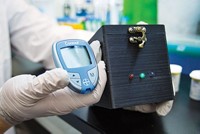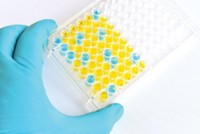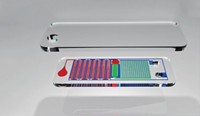Advertisement
Grab your lab coat. Let's get started
Welcome!
Welcome!
Create an account below to get 6 C&EN articles per month, receive newsletters and more - all free.
It seems this is your first time logging in online. Please enter the following information to continue.
As an ACS member you automatically get access to this site. All we need is few more details to create your reading experience.
Not you? Sign in with a different account.
Not you? Sign in with a different account.
ERROR 1
ERROR 1
ERROR 2
ERROR 2
ERROR 2
ERROR 2
ERROR 2
Password and Confirm password must match.
If you have an ACS member number, please enter it here so we can link this account to your membership. (optional)
ERROR 2
ACS values your privacy. By submitting your information, you are gaining access to C&EN and subscribing to our weekly newsletter. We use the information you provide to make your reading experience better, and we will never sell your data to third party members.
Analytical Chemistry
Lab-On-A-Chip For Planets, Moons
Microfluidics: Automated chip is designed to detect extraterrestrial amino acids
by Elizabeth K. Wilson
October 24, 2011
| A version of this story appeared in
Volume 89, Issue 43

A new lab-on-a-chip device can fully analyze a fluid sample for the presence of amino acids, making the single microdevice the first to complete such a task without intervention or auxiliary components (Anal. Chem., DOI: 10.1021/ac202095k). It was developed, and is being touted, as a means to test for the presence of biologically relevant molecules in extraterrestrial environments, such as Mars or Saturn’s moon Titan.
To sample molecules in extraterrestrial environments, devices need to withstand the rigors of space, says chemist Peter A. Willis, of NASA’s Jet Propulsion Laboratory at California Institute of Technology. Mechanical and electronic simplicity is a must.
It’s difficult to compress the many functions required to test molecules onto one chip: Tasks such as concentration, separation, and detection require different conditions, such as pH. Until recently, most lab-on-a-chip devices, which rely on capillary electrophoresis, have incorporated only some of the tasks involved in analyzing organic molecules. For example, researchers have made devices capable of separations and fluidic routing, but had not until now integrated them with components that analyze the sample.
To make their multitasking chip, Willis explains, he and his colleagues designed an array of pneumatic valves and pumps that ferry a sample into wells, where, for example, fluorescent labels attach to amino acids. Microcapillary electrophoresis separates the amino acids in the sample, and then laser-induced fluorescence detects them. This device does microfluidic manipulation autonomously, Willis says, so that it can conduct tasks such as sample labeling and serial dilutions that used to require human operators.
Carlos D. Garcia, associate professor of chemistry at the University of Texas, San Antonio, who develops microfluidic chips, says he’s impressed with the NASA chip’s capabilities. “I think it’s beautiful,” he says. “I’m so jealous of this chip!”
D. Jed Harrison, chair of the chemistry department at the University of Alberta, also praises the advance, saying that it “is certainly going to be required for deploying microfluidic systems in extraterrestrial analysis.”
The device could also find application on Earth, Willis says. He hopes to see it used in reprogrammable chemical analyzers.





Join the conversation
Contact the reporter
Submit a Letter to the Editor for publication
Engage with us on Twitter